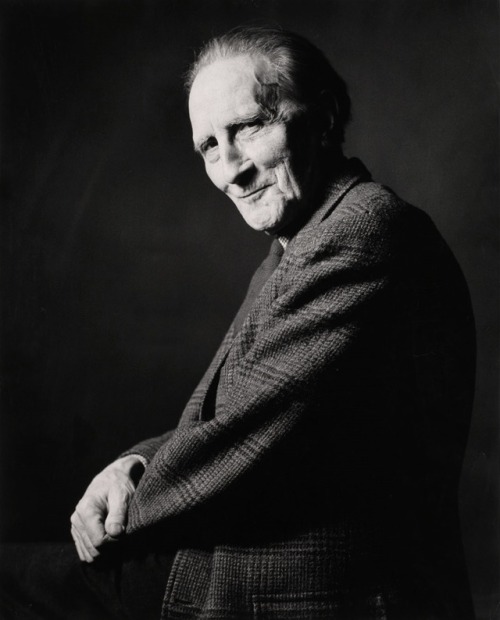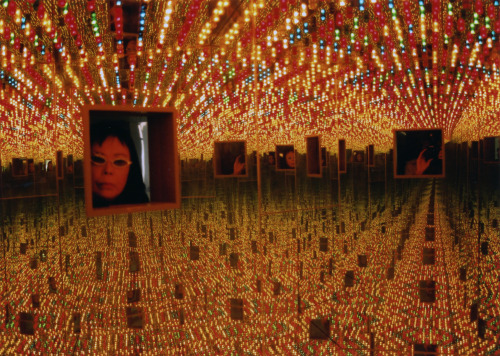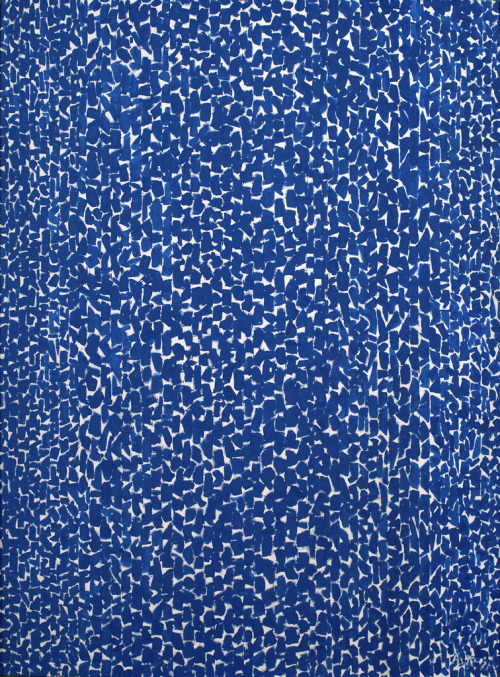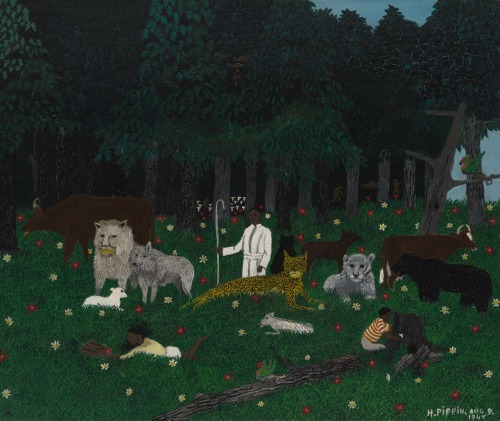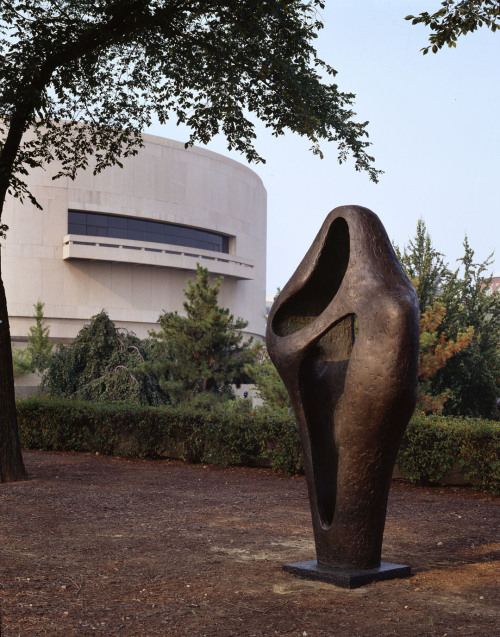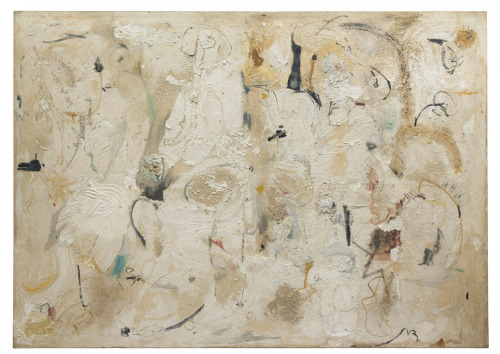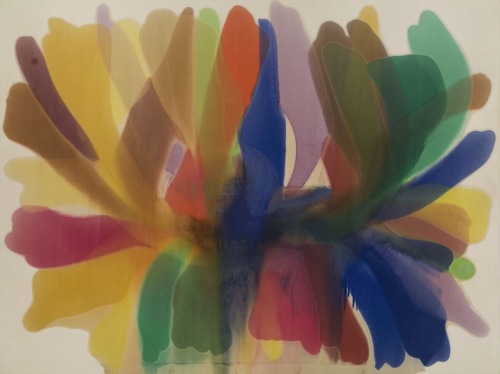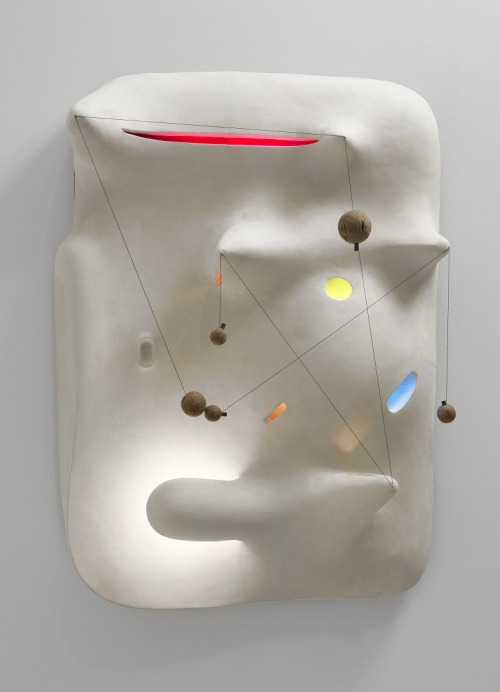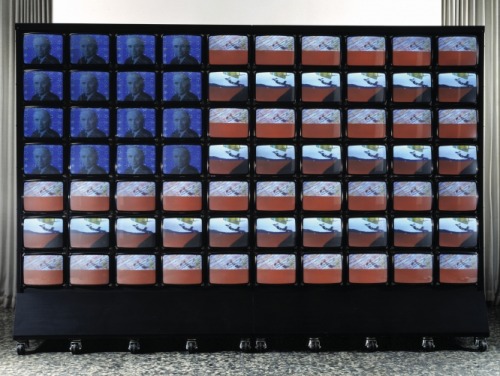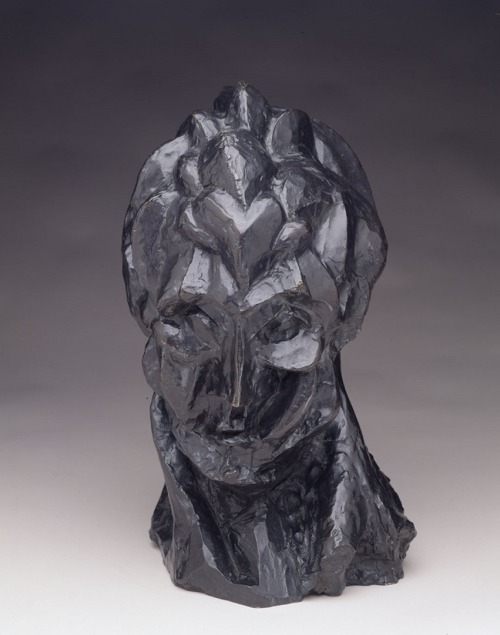#athirshhorn
Happy Birthday to Henry Moore, born on this day in 1898!
During the 1950s he devised many compositions of seated figures, usually in pairs or groups, which allude to the renewal of life in postwar Britain. The couple depicted in “King and Queen,” however, has greater public significance. The subject emerged as Moore worked on figures inspired by an Egyptian Seated Royal Couple from the eighteenth century B.C., a sculpture displayed in the British Museum. The serenity and stateliness of Moore’s figures, completed in the same year as the young Queen Elizabeth’s coronation, may also reaffirm Britain’s monarchy as a symbol of continuity and triumph after the country’s near destruction by war.
Explore more: http://s.si.edu/2v4Jk1W
Post link
“All in all, the creative act is not performed by the artist alone; the spectator brings the work in contact with the external world by deciphering and interpreting its inner qualification and thus adds his contribution to the creative act. This becomes even more obvious when posterity gives a final verdict and sometimes rehabilitates forgotten artists.”
Happy Birthday to Marcel Duchamp, born on this day in 1887!
Portrait by Bert Stern, 1967.
Post link
Happy Valentine’s Day!
We’re celebrating with Yayoi Kusama’s “Infinity Mirrored Room—Love Forever”! Hexagonal in shape and mirrored on all sides, Love Forever features two peepholes that invite visitors to peer in and see both themselves and another participant repeated into infinity. For the artist, the concept of “Love Forever” stood for civil rights, sexual liberation, the antiwar movement, and the activist groups of the 1960s.
Explore more: http://kusama.si.edu/
Photo: Courtesy of Ota Fine Arts, Tokyo/Singapore
Post link
“Light reveals to us the spirit and living soul of the world through colors,” ~ Alma Thomas
“Skylight” 1973 http://s.si.edu/2d41TbS
Post link
Happy Black History Month!
See the work of Horace Pippin on view in Masterworks from the Hirshhorn Collection.
Serving in an African American regiment during World War I in France, self-taught artist Horace Pippin received a wound that partially paralyzed his right arm. Thereafter, Pippin used painting as a physical therapy, and in 1931 was able to complete his first oil painting. Although his earliest works are somber depictions of his wartime experiences, his later scenes are hopeful and imbued with religious faith. “Holy Mountain III” (1945) is based on the biblical passage Isaiah 11:6-9, a prophecy that describes a peaceful world in which predatory animals live in harmony with their prey. A dense forest is suggested behind the flowered field, in which small, shadowy figures threaten to disturb the utopia.
Post link
“Carving is interrelated masses conveying an emotion; a perfect relationship between the mind and the color, light and weight which is the stone, made by the hand which feels.”
Happy Birthday to sculptor Barbara Hepworth, born on this day in 1903!
Hepworth took inspiration from organic forms and her compositions mimic the rhythm and flow of water-smoothed rocks, caves, and ancient hills. “Figure for Landscape” (1960) is on view in our sculpture garden, have you seen it at different times of day? Sunlight creates varied effects, and the openings allow for the surrounding landscape to become part of the artwork.
Post link
Happy Birthday to Joseph Cornell, born on this day in 1903!
Cornell used the Surrealist practice of bringing together unrelated found objects, his unique spin involved creating intricate shadow boxes. He was fascinated with eras and worlds different from his own, he created a whole series around Renaissance art including “Medici Princess” (1948-52).
Explore more of his work in our collection: http://s.si.edu/2hBqiGD
Post link
“There are no rules, that is one thing I say about every medium, every picture … that is how art is born, that is how breakthroughs happen. Go against the rules or ignore the rules, that is what invention is about.”
Happy Birthday to Helen Frankenthaler, born on this day in 1928!
To create “Painted on 21st Street,” (1950-51), Frankenthaler used oil paint, sand, plaster of Paris, and coffee grounds. This is one of her early works, which reflects her looking at Abstract Expressionist painters such as Jackson Pollock, who often included non-art materials – cigarette butts or enamel house paints, for example, in Pollock’s case – in their work. It is not typical of the artist’s most recognized technique of pouring paint on unprimed canvas, which led to her being associated with Color Field artists. See this piece on view in Masterworks from the Hirshhorn Collection.
Post link
Remembering Morris Louis, born on this day in 1912!
Louis was a central figure of the Washington Color School, a group of abstract painters that emerged in Washington, DC, in the late 1950s. Inspired by the techniques of Helen Frankenthaler, who used thinned pigments to “stain” her paintings, Louis devised a process of pouring diluted paint over the surfaces of unprimed and unstretched canvases. “Point of Tranquility,” from Louis’s Floral series, features flows of paint spreading outward from a dense center. The intense, sensual colors suggest dynamic processes of movement and growth.
Post link
“Having been torn from my homeland during my adolescence, I am overwhelmed by the feeling of having been cast out from the womb… . My art is the way I reestablish the bonds that unite me to the Universe. It is a return to the maternal source.”
Remembering Ana Mendieta, born on this day in 1948. Mendieta’s performative “earth-body” works probed the primeval link between woman and nature. Born in Cuba, Mendieta was separated from her family as a child, growing up in foster care in the United States. In the deeply personal, transformative actions documented in her video works, Mendieta’s body becomes a nexus of performance, conceptual art, and spiritual transcendence.
See her work on view in Masterworks from the Hirshhorn Collection: “Corazón de Roca con Sangre (Rock Heart with Blood)” (1975)
Post link
“We are a landscape of all we have seen.”
Remembering Isamu Noguchi, born on this day in 1904. “Lunar Landscape”(1943-44) is drawn from the imagination of the artist after several months in a Japanese-American internment camp, isolated in the desert during WWII. Noguchi had a lifelong preference for stone as a medium (he had worked with Constantin Brancusi in Paris in the late 1920s), but he also worked with clay and paper and was well known as a designer of landscapes, stage sets, and furniture. This sculpture is a rare surviving example of the “Lunar” series, in which Noguchi used a new material, magnesite, to create abstract biomorphic forms.
Post link
On Election Day, we’re thinking of Nam June Paik’s rendition of the American flag!
A flag is instantly recognizable on this 7-by-12-foot bank of 70 monitors, in which stars and stripes share air time with split-second news stills, rotating statues of Liberty, endless runs of ones and zeros (the binary language of computers), and a face that morphs through every U.S. president from Harry S. Truman to Bill Clinton.
Paik was an important pioneer in the development of video installation art. Trained in music theory, piano, and electronic music, Paik began his career as a performance artist and avant-garde musician. In the early 1960s he made his first “altered TVs” in which he manipulated television signals with magnets and used video feedback, synthesizers, and other technology to produce kaleidoscopic shapes and luminous colors.
Photo: Still of “Video Flag” (1985-1996)
Post link
Happy Birthday to Walt Kuhn, born on this day in 1877!
A versatile artist and theater designer, Kuhn played a significant role in the development of twentieth-century American art. “The Tragic Comedians” (1916) reveals his early mastery of modern figure composition and his fascination with the theme of the circus.
Post link
Remembering Roy Lichtenstein, born on this day in 1923!
His monumental sculpture, “Brushstroke,” sits on our plaza, facing the National Mall. Lichtenstein, who emerged with Robert Indiana, James Rosenquist, Andy Warhol and others in the early 1960s, contributed to the development of American Pop art with his paintings of comic-book action and melodramatic scenes. The artist began creating large-scale sculptures of painted aluminum in the 1980s, the model for “Brushstroke” was completed in 1996. The artist attended to every detail of its future realization before his death, making it one of the last examples of Lichtenstein’s ongoing engagement with the brushstroke motif.
Post link
Happy Birthday to American artist Julian Schnabel, born on this day in 1951!
Julian Schnabel first painted on velvet in 1982 because he liked the way the images floated on the surface of the pile. Such nontraditional material was not unusual for the artist, who had already become known for his paintings on broken crockery and who would later work on truck tarpaulins. Velvet, ranging in its associations from opera-house curtains to kitsch, is especially fitting for a portrait of artist Andy Warhol (American, 1928-1987), who wore black velvet jackets and sponsored the 1960s rock band The Velvet Underground. Schnabel’s depiction of the bare-torsoed Warhol alludes to the portraits of Warhol made by painter Alice Neel and photographer Richard Avedon soon after Warhol was shot and critically wounded in his studio in 1968.
The two artists admired each other’s work, Schnabel gave this portrait to Warhol, and in return received several portraits that Warhol had done of him. This painting remained part of Warhol’s collection until his death.
Explore more: hirshhorn.si.edu/collection/julian-schnabel/
“Portrait Of Andy Warhol” (1982)
Post link
Just announced: “Brand New: Art and Commodity in the 1980s” opening Feb. 14, 2018, the first museum exhibition to examine the artistic appropriation of commercial products in the late 20th century, a pivotal moment when artwork became a commodity and the artist became a brand. Organized by Gianni Jetzer, the Hirshhorn’s curator-at-large, “Brand New” examines the origins and rise of the key group of artists in New York City’s East Village who first used the language and objects of commerce as a radical new approach to art making.
Learn more: http://hirshhorn.si.edu/bio/press-release-brand-new/
Photo: Haim Steinbach “Supremely black” 1985, Private Collection; courtesy the artist and Tanya Bonakdar, New York.
Post link
Happy Birthday to Pablo Picasso, born on this day in 1881!
Probably the most famous artist of the twentieth century, Picasso had a profound effect on the development of modern art. During an extremely prolific career spanning over seventy-five years, he was an innovator in painting, sculpture, collage, prints, and ceramics, and the pioneer, along with Georges Braque, of Cubism.
From spring through autumn in 1909, Picasso concentrated on a series of drawn and painted portraits with increasingly stylized and fragmented forms, culminating in “Head of a Woman (Fernande Olivier)”. Fernande Olivier, Picasso’s companion and model from 1905 to 1911, was the subject of many of his early works. This portrait of Fernande represents his major attempt to apply the faceted planes of Analytical Cubism to three-dimensional forms, and is now recognized as his first Cubist sculpture.
Explore more of his works in our collection: http://s.si.edu/2eFFVgP
Post link
Tomorrow: our Ragnar Kjartansson exhibition opens!
Over the past fifteen years, Icelandic artist Ragnar Kjartansson (b. Reykjavik, 1976) has created an impressive body of work that brings together theater, music, literature, film, and painting. Resisting characterization by genre or medium, Kjartansson’s work navigates extremes of high art and popular culture, sincerity and kitsch, playfulness and the depths of sorrow.
InGod 2007, Kjartansson stands in front of the camera dressed as a debonair 1950s crooner, with an eleven-piece orchestra behind him atop raised platforms draped in pink satin. Pink draperies also wrap the room in which the video is projected. The cabaret-like setting and overt reference to Hollywood glitziness underscore the over-the-top theatricality of the video. With an empty smile, Kjartansson sings a single refrain, “sorrow conquers happiness,” repeatedly in an absurdist mantra, modulating his intonation slightly as the orchestral arrangement changes, moving from delicate piano and harp to sumptuous cacophonous blasts of brass, strings, and percussion. Kjartansson is so convincing as the suave entertainer, devoted to his performance, that the tension between affectation and sincerity swings like a pendulum.
Post link


